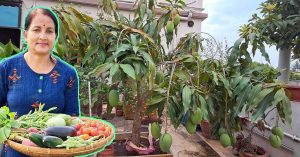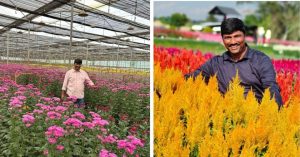How Lenovo Used Technology to Revive the Lost Millets of a Kerala Village
Lenovo’s Work for Humankind initiative has helped revive traditional millet cultivation in Kanthalloor. They are helping farmers grow, package and market their millets through their technology interventions and volunteers.
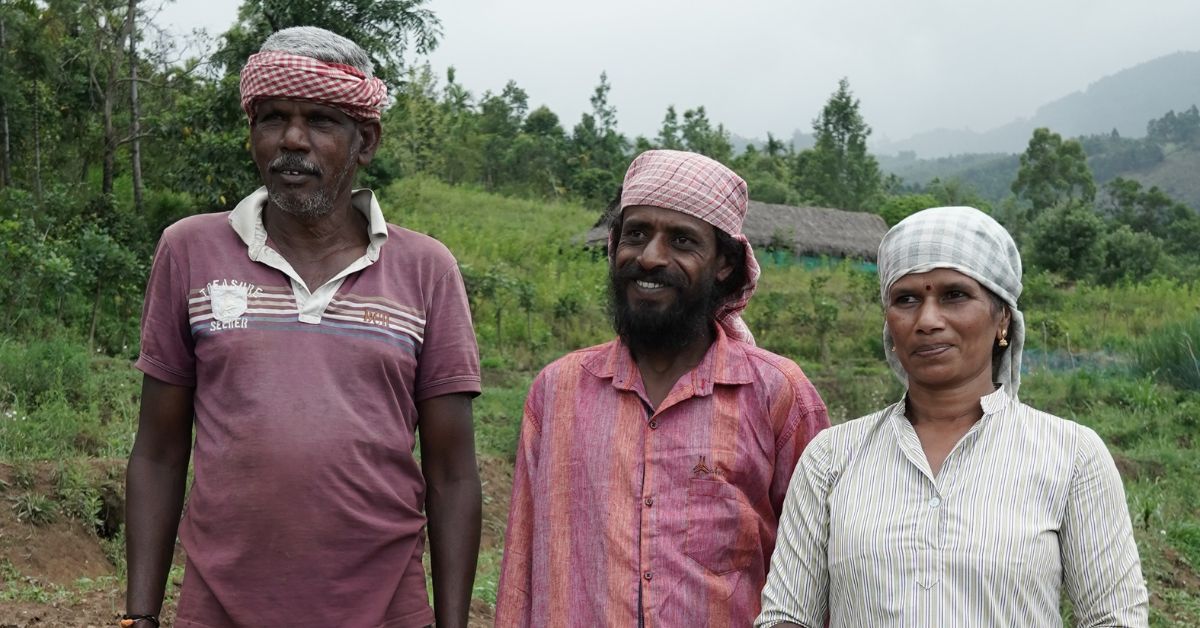
This article is published in collaboration with Lenovo India
When Kanthalloor Grama Panchayat President P T Mohandas was campaigning for elections in 2020, he saw huge sacks lying in several households. On inquiry, he found that each of the tribal households there had almost 500 to 1,000 kg of finger millet (ragi) lying unused. Reason — they didn’t know how to sell it and used this superfood solely for self-consumption.
Something had to be done, thought Mohandas.
While he began seeking ways to sell the surplus ragi and uplift the villagers’ livelihoods, Lenovo was also exploring ways to integrate technology for farmers’ welfare and promote the cultivation of millets in Kanthalloor.
Why?
Kanthalloor was once home to over 18 varieties of millet, according to farmers. But over the past 20 years, as people shifted towards consuming more rice and wheat, millet consumption gradually reduced and so did its cultivation. The village lost its diverse variety of millet and the number came down from 18 to just two.
Lenovo embarked on a mission to revive millet cultivation in the Idukki district and help farmers flourish through the assistance of technology. Through its ‘Work for Humankind’ initiative, the volunteers have helped reinstate some lost millets, bringing the millet variety to six.
In addition, it has set up a digital centre, worked on the branding and marketing of the millets, and set up a processing unit — all to help Kanthalloor’s farmers restore its generational millet glory.
As a result, over the past year, about 1,800 kg of six types of millet — including finger millet, barnyard millet, little millet, foxtail millet, proso millet, and kodo millet — have been cultivated by 25 farmers on 15 acres of land in the village. This harvest has also been processed and packaged, and will be sold through the various channels. The farmers hail this initiative and hope that it will be a harbinger of a better tomorrow.
A human-centric innovation

Kanthalloor, a village surrounded by the Western Ghats in Kerala’s Idukki district, used to be a hub for millets, cultivating nearly 18 varieties until three decades ago. However, its proximity to the Chinnar Wildlife Sanctuary poses a challenge for farmers due to animals like boars and elephants damaging their millet crops.
As consumerism grew and the sale of rice increased, the demand for millets declined. This too affected the tribal community living in the forest, lacking access to a proper market for their produce.
In light of 2023 being the ‘International Year of the Millet’, Lenovo aimed to revive this traditional superfood in Kanthalloor, as shared by Pratima Harite, Head of Asia Pacific CSR & Philanthropy at Lenovo Foundation.
With an idea to mobilise the community using technology, Lenovo first surveyed 227 households in the grama panchayat. They found that over 60 percent of households cultivated millet only in a small portion of their land i.e. below 20 cents. This was not the case earlier, according to Mohandas, who states that over 60 percent of the land was used to cultivate millets a few decades ago.
“We wanted to help these farmers go back to their roots and start cultivating millets again, this time empowered with the help of technology, training and marketing. We believe that smart technology solutions have the power to transform communities and revive lost traditions. This technology would also help the younger generation take the information forward in their families,” Pratima tells The Better India.
Lenovo, through its ‘Work for Humankind’ initiative has partnered with Dream India Network — a non-profit organisation working on the ground — as the implementation partner; the Grama Panchayat for eco-tourism and farmer engagement; IHRD College for Applied Sciences, Kanthalloor, for setting up their technology centre; and Samudra Network and Agri app as their digital integration partner.
The first activity that Lenovo undertook with the help of Dream India Network, was to choose 25 farmers — 16 of whom are women — from five wards and convince them to sow millets in a portion of their land. They were given good-quality seeds and taught different ways to revive the crop.
“These farmers were already growing ragi for self-consumption. We asked them to try growing any of the other five varieties in 50 cents of their unused land by instilling confidence that we would market it. Since the land was already used for millet cultivation earlier, there would be no problem. Furthermore, millets grow in low-fertility soils and don’t even need too much water. They just need timely rain to get a good harvest,” explains Dr Saju Parackal, CEO, Dream India Network.
Using tech to revive traditions
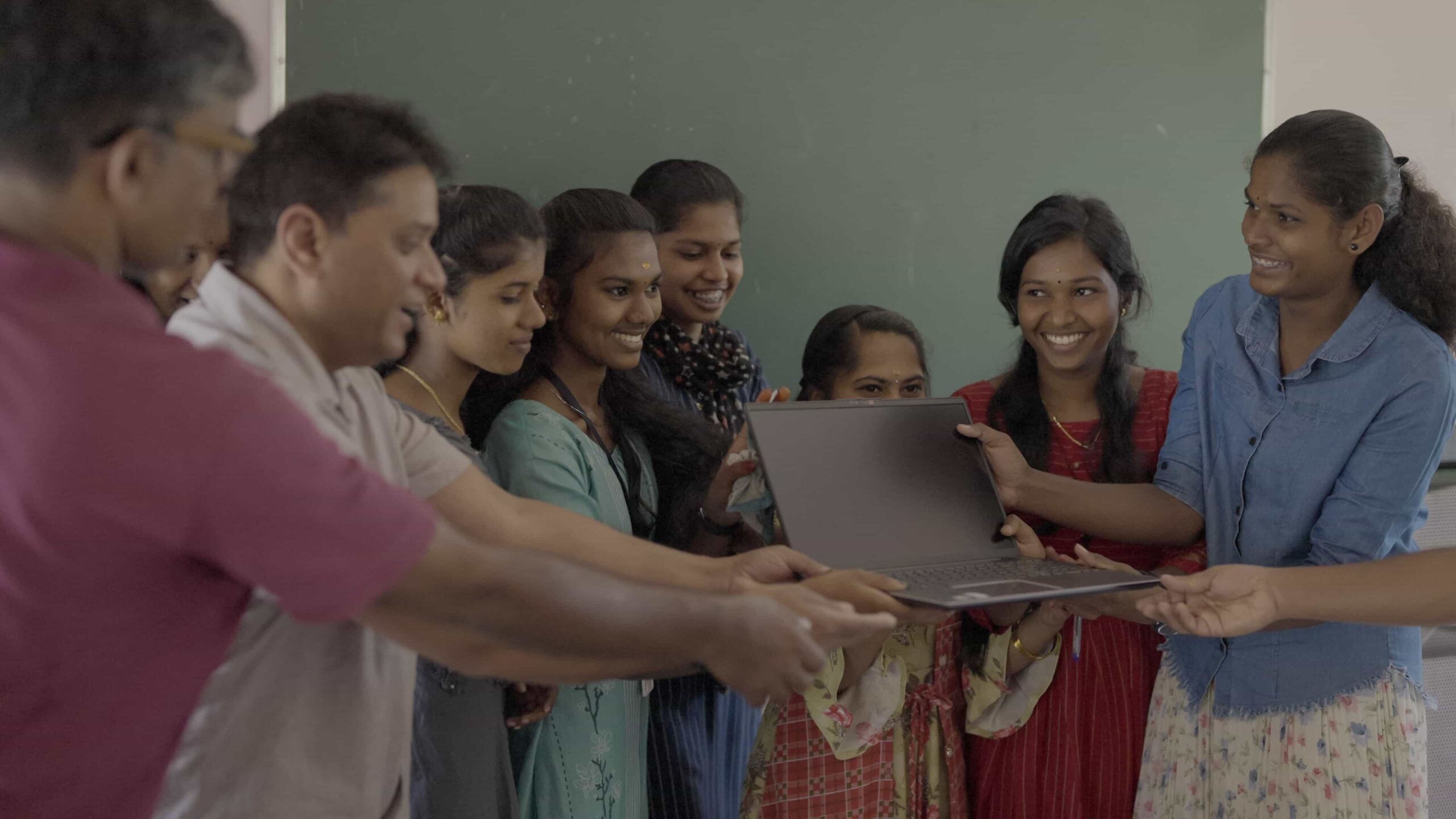
Lenovo then got on to set up the ‘Lenovo Digital Centre for Kanthalloor Millets’ at IHRD College of Applied Science. This hub, equipped with Lenovo’s devices stores data and facilitates information sharing. It organises activities engaging young people, supports farmers in exchanging insights, and shares information on Government programmes like crop insurance, diversification schemes, and subsidies.
IHRD College students volunteer alongside Lenovo volunteers oversee the Tech Centre. Additionally, Lenovo provided farmers with Motorola mobile phones containing agricultural apps linked to the Samudra Network and Agri App to monitor their crops.
Next, a processing centre was established to process, brand and sell the harvested millets. It is managed by a self-help group of six women from Kudumbashree unit from Kanthalloor. The millets are now known as ‘Kanthalloor millets’ and are available in over 50 homestays in the village, with plans to sell them online soon.
This initiative has offered a stable income for these women, who previously worked as contract labourers without consistent jobs.
“We wanted to create direct market linkages for the farmers while cutting down middlemen. Currently, the farmers sell loose produce at local stores and are not aware of the avenues where they can sell. So we have created this brand [Kanthalloor Millets] and shown them ways to sell to become self-reliant,” says Pratima, adding that the millet will also be part of the mid-day meal programmes at the anganwadis.
This year, Kanthalloor received the ‘Best Rural Tourism Village Gold Award’ from the Union Government. With more than 250 homestays, the village attracts many visitors on weekends. Millet kiosks will be set up at each homestay, serving as both sales points and seed banks for Kanthalloor Millets.
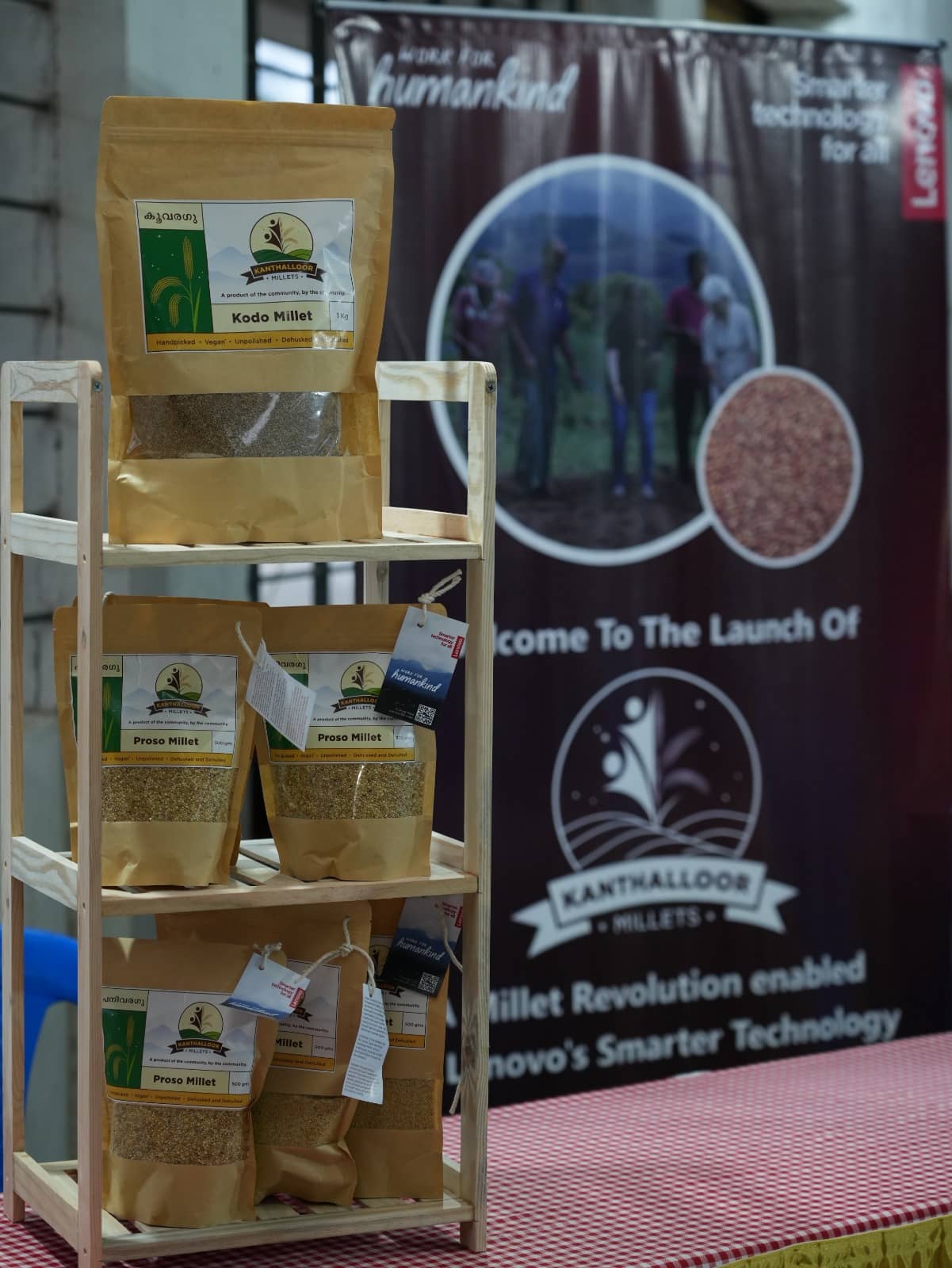
Dr Parackal says they are creating linkages with exporters to sell millets once the yield increases and are also working with the Kerala Government’s agriculture department to widen the processing unit.
Radhakrishnan, a farmer who is part of the programme and former president of Devikulam block panchayat, expressed happiness at the initiative. “This is our traditional food; we have started consuming unhealthy food only over the past 30 years. It came to a situation where we didn’t even have good-quality seeds to sow. Lenovo helped us source good quality seeds, which have helped us get a good harvest. We are hopeful of an even better yield in the coming months,” he says.
The initial harvest produced more than 1,800 kg, as reported by the company. Encouraged by this success, they plan to involve 25 additional farmers, each with an acre, expanding millet cultivation to cover 75 acres of land.
Lenovo volunteers helped gather data and analyse the impact of solutions, helping farmers access the necessary apps, and building awareness for market linkages. They are also providing digital access to information on Government programmes and millet cultivation methods to the farmers.
Meanwhile, Mohandas informs that he is boosting the production of millet by giving subsidies to 124 farmers from next year. Kannamma Gopalan, one of the 25 farmers who saw a good yield, hopes that this is the beginning of a path towards progress for the villagers.
“This might push the youngsters to take an interest in farming. It’s also a major step towards progress for us,” she says. If you found our stories insightful, informative, or even just enjoyable, we invite you to consider making a voluntary payment to support the work we do at The Better India. Your contribution helps us continue producing quality content that educates, inspires, and drives positive change. Choose one of the payment options below for your contribution- By paying for the stories you value, you directly contribute to sustaining our efforts focused on making a difference in the world. Together, let’s ensure that impactful stories continue to be told and shared, enriching lives and communities alike. Thank you for your support. Here are some frequently asked questions you might find helpful to know why you are contributing?

Edited by Pranita Bhat
This story made me
-
97
-
121
-
89
-
167




